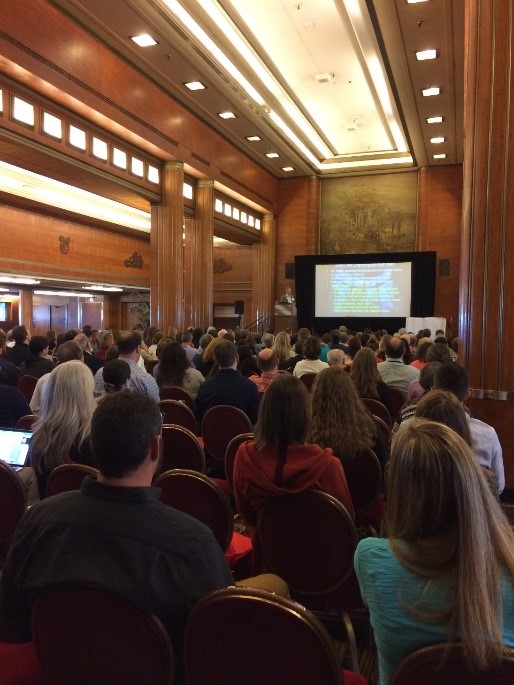Harmful algae conference focuses on research, strategy

Researchers and environmental managers working to understand and address the threat of harmful algal blooms (HABs) across the nation coalesced in Long Beach in November for a five-day national scientific conference on HABs co-organized by SCCWRP and the University of Southern California.
The Eighth Symposium on Harmful Algae in the U.S. provided an in-depth forum for scientific exchange and technical communication on strategies to manage both freshwater and marine HABs. It was held aboard the historic Queen Mary ocean liner docked in Long Beach.
Presentations focused on the role of climate change, anthropogenic nutrient inputs, and other human and natural factors in exacerbating the proliferation of HABs worldwide.
A key focus was on one of the largest and most toxic HABs events ever to hit the West Coast – the proliferation of domoic acid-producing Pseudo-nitzschia throughout spring and summer 2015.
Attendees also learned about HAB modeling, forecasting and predicting, management and remediation strategies, and discussed strategies and planning efforts for better managing HABs during the El Nino season.
The keynote speaker, Dr. Raphael Kudela of the University of California, Santa Cruz, focused his talk on chronicling HABs research in California that SCCWRP has contributed to and remains a key collaborator on.
Dr. Meredith Howard of SCCWRP, the conference’s co-organizer, presented a talk on cyanobacteria and cyanotoxin research.
The conference attracted 260 attendees from a wide cross-section of the HABs community – state, federal and local government, academic scientists, tribal governments, NGOs, and the private sector.
The conference deliberately did not run concurrent sessions, allowing every attendee to participate in every session and maximizing opportunities for interactions.
For more information, contact Dr. Meredith Howard.
More news related to: Eutrophication, Harmful Algal Blooms